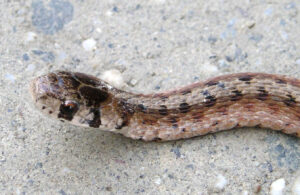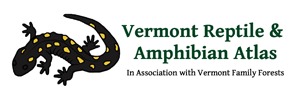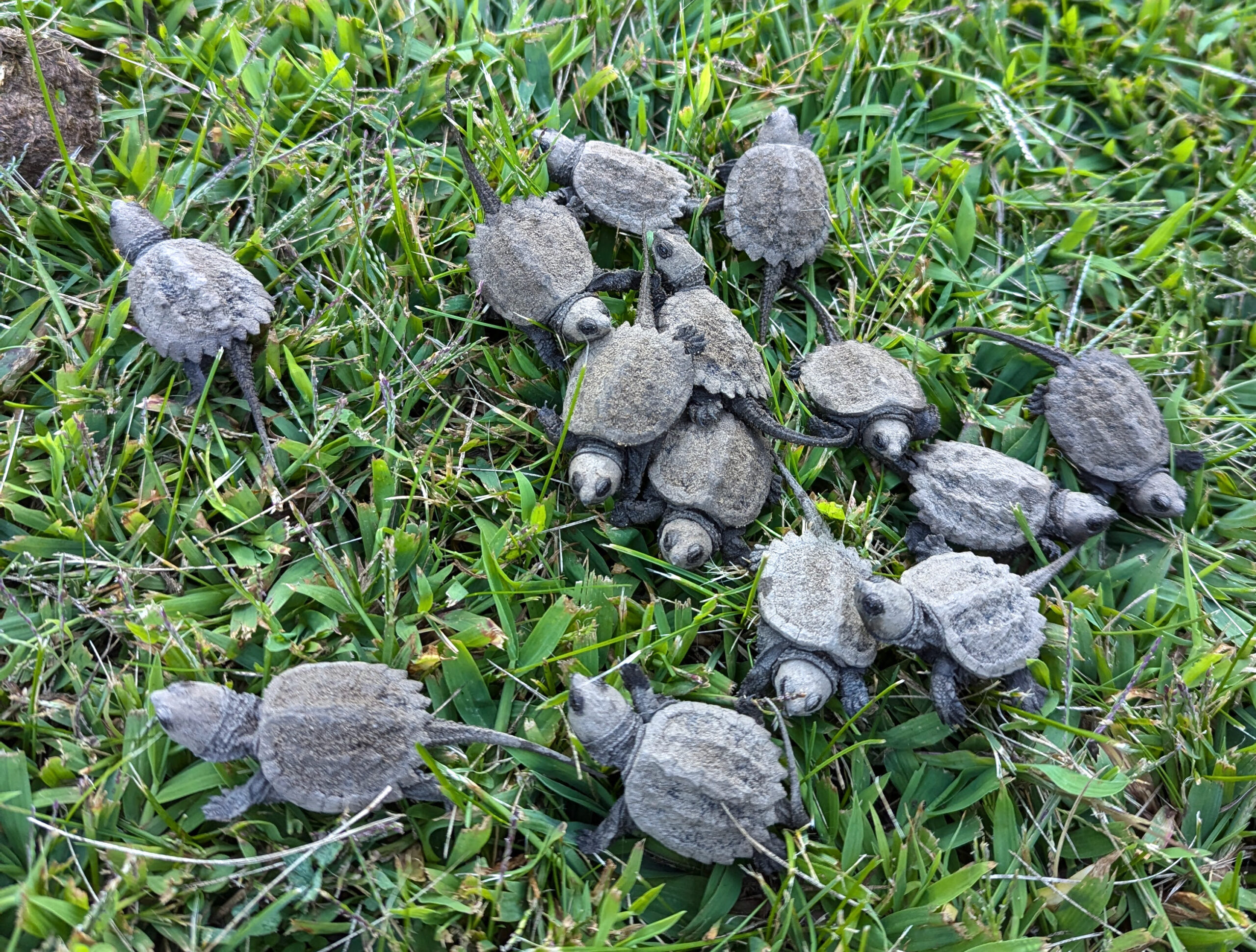
Herp Update: Snapping Turtles emerging, Unusual Colorations, Snakes Migrating – September 11, 2024
Recent Herp Activity
Snapping Turtles are hatching
We have received a number of reports recently from landowners who have young Snapping Turtles emerging from underground nests in their lawns and gardens. The photo of the fourteen baby snappers below was sent by Lacie Austin in Bradford on August 29. Our records show August 29 to be the earliest date of reported emergence of Snapping Turtles in Vermont. The latest date of emergence we have is November 4. The great majority of reports are from September and October.
Here in Vermont, Painted Turtles generally hatch in the fall but they stay in their underground nests until the following spring.
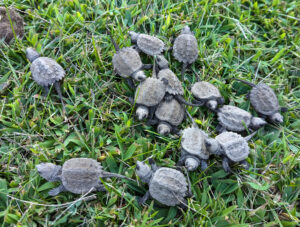
More odd colors
We continue to get reports of unusual background coloring or patterning on Vermont’s herptiles. Recently Sue Wetmore sent in this photo of a very dark adult Eastern Newt (top) in Chittenden. David Hoag sent in the photo below of a very yellow adult Eastern Newt from Grand Isle and Kathy Kinter sent in the photo of an almost black female Green Frog from Brookfield (bottom).
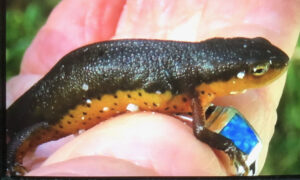
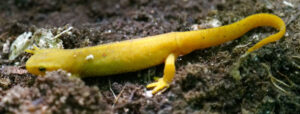
Snakes Will Soon be on the Move
Beginning in mid-September and continuing through mid-to late-October, snakes will leave the habitats where they spent the summer and begin migrating uphill to their overwintering sites. For many species, this movement seems to be triggered by the first frost of the year. Some species such as DeKay’s Brownsnakes (photo below) spent their summers in old wet fields, while others spend time closer to wetlands or ponds (such as Common Gartersnakes). In all cases, these snakes cannot survive freezing over the winter. So, they have to migrate (usually uphill) to an area where they can find holes in which to get underground below the frostline (in Vermont, about 4 feet underground). For many species, this may be a rocky hillside. Unfortunately for snakes, we humans have built many roads between wetlands/fields and rocky hillsides. Cars on these roads can quickly kill many snakes. Roads can also act as attractants, as they are often open and their dark color gets warmed by the sun. For a cold snake, it seems like the perfect place to bask to raise its body temperature. For us herpers, roads that run between lowland wet fields/wetlands and upland are great areas to quickly and easily see snakes and document what lives in an area. It is possible to see dozens of individuals of a species of snake in a short distance and amount of time. For those of you looking to help us out with our snake distribution knowledge, it can be very productive to walk or bike a stretch of road on a sunny fall day after the first frost (or cold night), and count and photograph snakes that you see (one photo of each species you find). Check the searchable table at https://www.vtherpatlas.org/priorities-data-gaps/common-vermont-species-that-need-documentation/to see what species we need from your town, then send us a report of what you find!
Toby Alexander send us the photo below of a DeKay’s Brownsnake crossing a road. In addition to the brown background and black checkerboard markings on its sides; notice the black spot on the top of its head, the black spots under the eye, the black “sideburns”, and the black comma on each side of the neck. These head markings are all very useful field marks.
